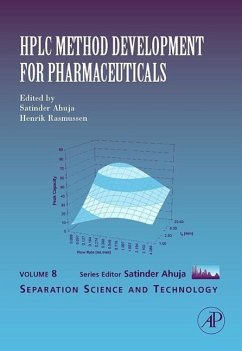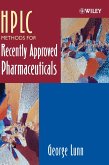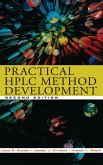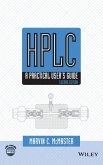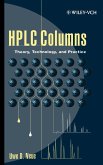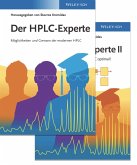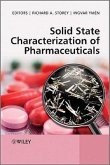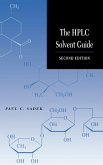High pressure, or high performance, liquid chromatography (HPLC) is the method of choice for checking purity of new drug candidates, monitoring changes during scale up or revision of synthetic procedures, evaluating new formulations, and running control/assurance of the final drug product. HPLC Method Development for Pharmaceuticals provides an extensive overview of modern HPLC method development that addresses these unique concerns. Includes a review and update of the current state of the art and science of HPLC, including theory, modes of HPLC, column chemistry, retention mechanisms, chiral separations, modern instrumentation (including ultrahigh-pressure systems), and sample preparation. Emphasis has been placed on implementation in a pharmaceutical setting and on providing a practical perspective.
HPLC Method Development for Pharmaceuticals is intended to be particularly useful for both novice and experienced HPLC method development chemists in the pharmaceutical industry and for managers who are seeking to update their knowledge.
Covers the requirements for HPLC in a pharmaceutical setting including strategies for software and hardware validation to allow for use in a regulated laboratory Provides an overview of the pharmaceutical development process (clinical phases, chemical and pharmaceutical development activities) Discusses how HPLC is used in each phase of pharmaceutical development and how methods are developed to support activities in each phase
Hinweis: Dieser Artikel kann nur an eine deutsche Lieferadresse ausgeliefert werden.
HPLC Method Development for Pharmaceuticals is intended to be particularly useful for both novice and experienced HPLC method development chemists in the pharmaceutical industry and for managers who are seeking to update their knowledge.
Covers the requirements for HPLC in a pharmaceutical setting including strategies for software and hardware validation to allow for use in a regulated laboratory Provides an overview of the pharmaceutical development process (clinical phases, chemical and pharmaceutical development activities) Discusses how HPLC is used in each phase of pharmaceutical development and how methods are developed to support activities in each phase
Hinweis: Dieser Artikel kann nur an eine deutsche Lieferadresse ausgeliefert werden.
"This book is written with pharmaceutical scientists in mind, regardless of their level of experience with HPLC method development. By extension, it would be valuable for managers and regulators as well. It may also be of value to those managing a lab or research program in the academic setting.
The 18 chapters are written by 35 contributors, mostly from the U.S., with just over half from the pharmaceutical industry. The book is divided into two major sections, one a state-of-the-science review of HPLC and one on the unique needs in a pharmaceutical setting. This latter section is what makes the book most useful to the intended audience. It addresses topics such as method development for each phase in the drug development process, strategies for software/hardware validation, and prevention/troubleshooting problems. There is lots of concern for instrument qualification and validation in meeting regulatory requirements. The role of HPLC in tandem with mass spectrometry and other detection methods for assaying biological samples does not receive nearly as much attention.
Assessment: The book is clearly superior to the many books on HPLC methods development which do not address pharmaceutical issues to any great extent, if at all. There is generous use of figures and tables throughout and very little overlap across chapters. Weighted Numerical Score: 88 - 3 Stars" --Review in Doody's 2008, by Joseph Boullata, PharmD(University of Pennsylvania College of Nursing)
The 18 chapters are written by 35 contributors, mostly from the U.S., with just over half from the pharmaceutical industry. The book is divided into two major sections, one a state-of-the-science review of HPLC and one on the unique needs in a pharmaceutical setting. This latter section is what makes the book most useful to the intended audience. It addresses topics such as method development for each phase in the drug development process, strategies for software/hardware validation, and prevention/troubleshooting problems. There is lots of concern for instrument qualification and validation in meeting regulatory requirements. The role of HPLC in tandem with mass spectrometry and other detection methods for assaying biological samples does not receive nearly as much attention.
Assessment: The book is clearly superior to the many books on HPLC methods development which do not address pharmaceutical issues to any great extent, if at all. There is generous use of figures and tables throughout and very little overlap across chapters. Weighted Numerical Score: 88 - 3 Stars" --Review in Doody's 2008, by Joseph Boullata, PharmD(University of Pennsylvania College of Nursing)

